Lane filtering is a controversial topic amongst motorcyclists, motorists, and other road users. Filtering, otherwise known as lane splitting, is a practice that’s widely accepted in many countries around the globe but has never gained much traction in North America. Over the last few years, interest in changing filtering laws has grown but as that interest has grown, so has its opposition.
Before we jump in and examine the most enduring for-and-against arguments surrounding the filtering debate, let’s take a quick look at what lane filtering and lane splitting mean, and shed a bit of light on this often-misunderstood road maneuver.
What is lane filtering?
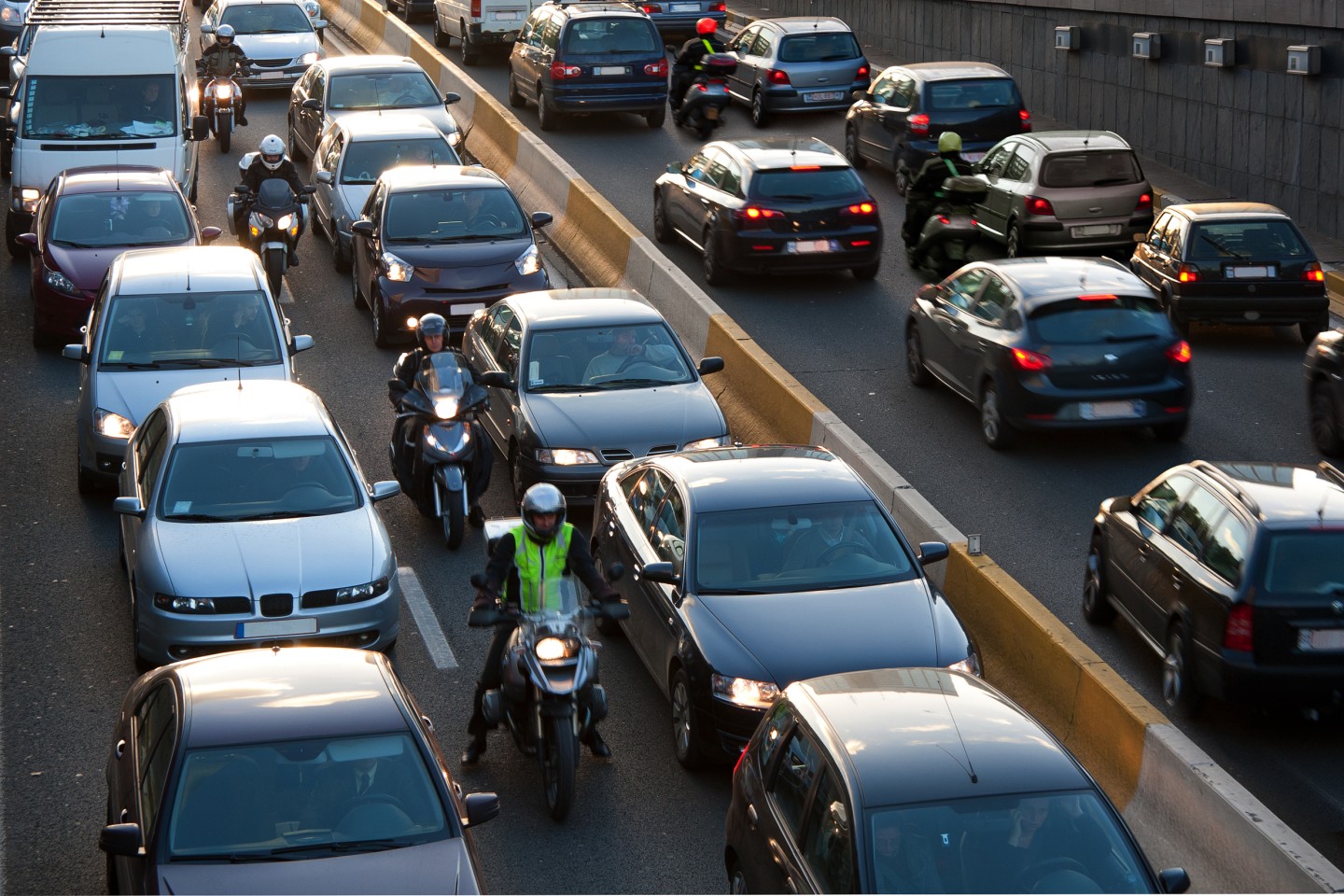
Lane filtering is the act of using the road space between vehicles. In countries that allow filtering, it’s described as a move that motorcyclists can employ to move through stationary traffic or traffic that is traveling at a very slow pace. Filtering doesn’t necessarily have to occur between two vehicles, it can also be used on the space on the outside edge of a lane.
Some authorities consider lane filtering and lane splitting to be two different things, with filtering being the term used to apply to motorcycles and cyclists riding between stationary cars to move into a better and safer position at the front of a traffic queue. Lane splitting is often used to describe the more dangerous act of riding a motorcycle between moving traffic, often at a higher speed.
Finding a standard definition is one of the main reasons why filtering is such a hot topic. To some, it’s a safe and practical way for motorcyclists to beat traffic and help ease congestion. To others, it’s a dangerous act that causes accidents and puts lives at risk. This difference of opinion has caused many a debate in recent years, especially as California made changes to its laws in 2016 that legalized the maneuver.
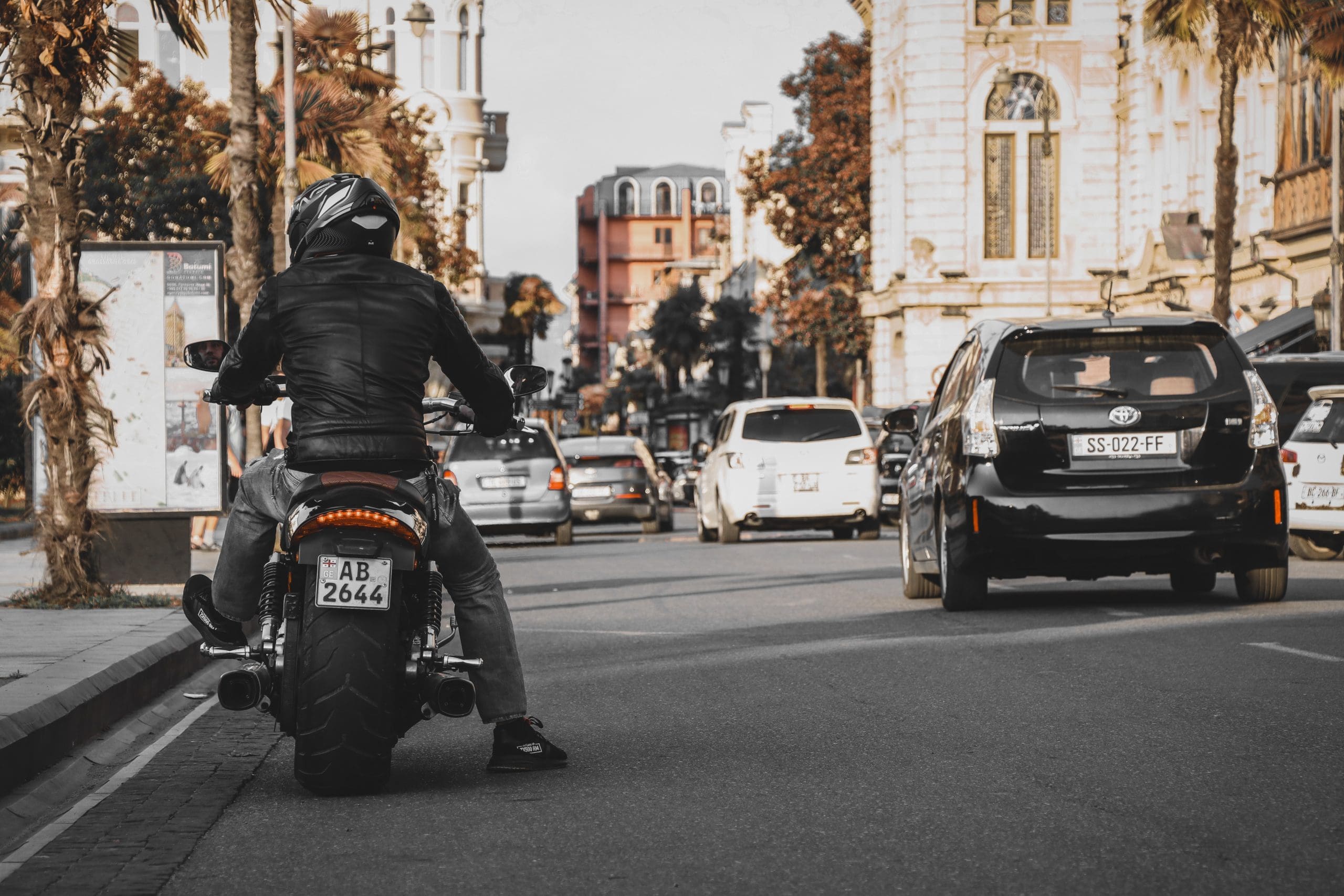
Currently, California is the only state in the U.S that permits lane-splitting. The success of the California bill prompted other states to consider their position on the subject and a number of others planned to follow suit. As of 2021, California still remains the only state to permit lane splitting, providing that the maneuver is executed in a safe and prudent manner.
Utah has its own rules on the matter. Filtering is legal in certain circumstances. Motorcyclists may filter between two-lanes of traffic when the surrounding traffic has come to a complete standstill.
There are other states—Montana, New Mexico, Oklahoma, Texas, Arkansas, Missouri, Mississippi, Kentucky, Ohio, West Virginia, North Carolina, and Delaware—that don’t have specific laws about whether the practice is legal or prohibited.
The rules are no clearer in Canada either. While it’s widely assumed the lane filtering is illegal, there are some regions with no set laws on the matter. For example, the Ontario Ministry of Transportation declares that lane filtering is “extremely dangerous” though the actual act has no specific law attached to it. That doesn’t make it legal, as you’ll be cited for dangerous driving. For all intents and purposes, lane filtering is illegal in Canada. Full stop.
In Europe, however, the act is tolerated, welcomed, and actively encouraged in many places.
So, with so many varying rules, why are some riders and road users for lane filtering, and why are so many against it? Here are some of the most popular arguments.
What are the arguments for lane filtering?
It’s safer
The most common argument in favor of lane filtering is the one that has the most evidence behind it. Statistically, it’s safer for motorcyclists to move through traffic queues. If left exposed, motorcyclists are more likely to be rear-ended. They’re less likely to be seen, so they’re more vulnerable. And unlike cars, there’s no protective metal cage surrounding the rider. A study from the University of California Berkeley suggests that riders who filter are safer.
It’s more efficient
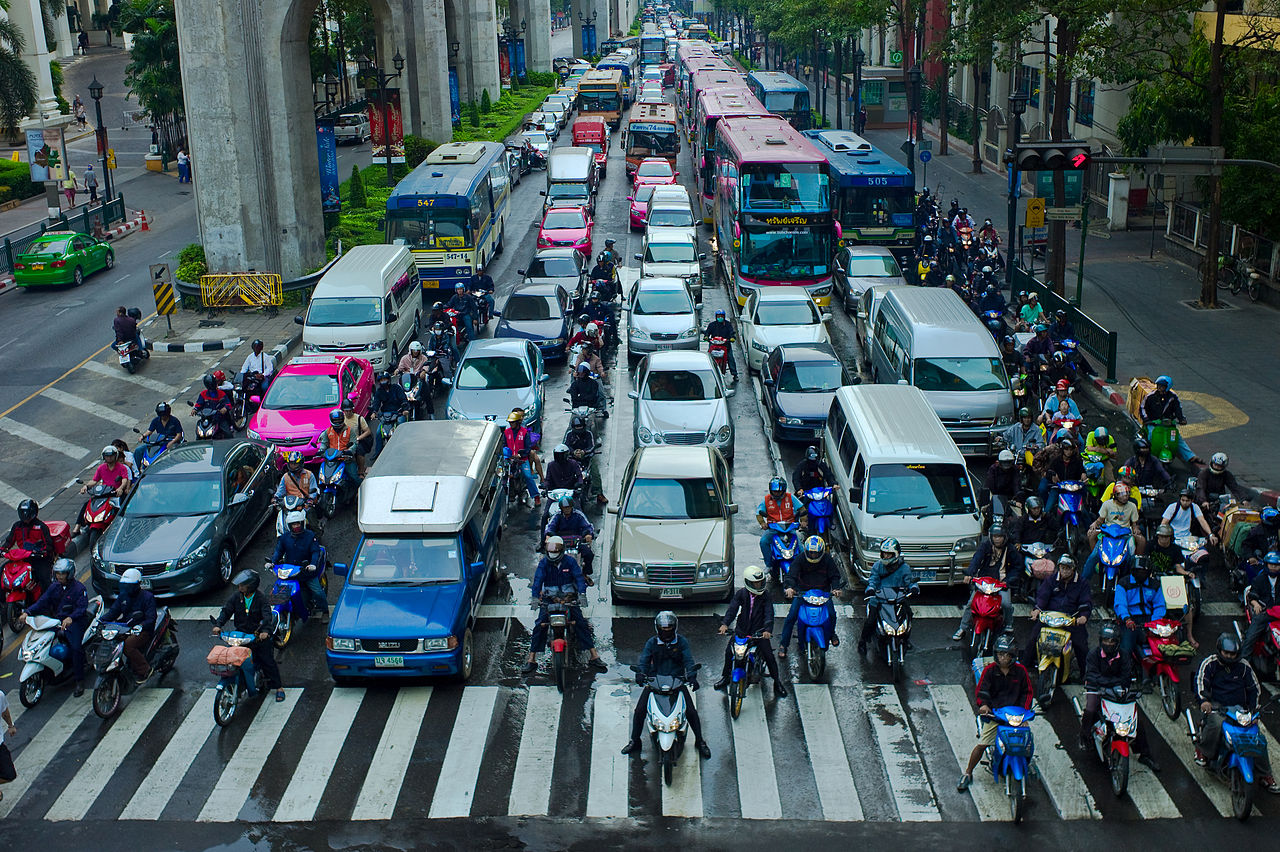
Filtering eases traffic congestion, and it’s not just in favor of motorcycle riders. Of course, motorcyclists can filter to the front of traffic queues and that saves time on their journey, but it also frees up space for other motorists.
A 2012 study from the Belgian city of Leuven agrees that filtering can make journeys easier for everyone. A quote from the study reads:
“If 10 percent of the cars on the road were replaced with motorcycles, congestion would drop by 40 percent, and if 25 percent of cars were replaced with motorcycles, congestion would disappear. The reason for this is that motorcycles take up less space in traffic, and the study assumes that at stoplights, motorcycles will filter between lanes to the front.”
In short: if motorcyclists are allowed to the front, everyone wins.
It’s more environmentally-friendly
It’s hard to argue with the logic that a stationary vehicle is an inefficient vehicle. While stationary or moving a vehicle will still produce harmful emissions, however, creating emissions in exchange for no progress on a journey, at an efficiency rate of zero miles per gallon, is hardly doing the environment any favors.
It raises awareness
By filtering, car drivers are more aware of the motorcyclists around them. While filtering may raise the ire of some drivers as a motorcyclist zips by their window in stationary traffic, it does keep motorists more aware of the presence of smaller vehicles on the roads. With more motorists looking out for each other, even if only to scowl in envy, it’s better and safer for everyone.
It makes for better motorcyclists
Some motorcyclists will accept that filtering can be a difficult maneuver and does require sharp skills to easily navigate the narrow space between stationary and slow-moving vehicles. Filtering forces riders to brush-up on certain skills that are often lost after basic training courses. For example, slow speed control using the throttle, clutch, and rear brake, can often be neglected by riders. By giving motorcyclists more opportunities to test these skills on the roads, it makes them better and more skillful riders.
It’s not mandatory
It can be intimidating but it’s not mandatory. In countries where filtering is legal, it’s completely optional. If you don’t want to filter, you don’t have to. If you deem that it’s unsafe, then you can simply sit in the queue as normal. There’s no pressure to filter and there never will be, which is why many filtering advocates demand a change in the law.
What are the arguments against lane filtering?
Lanes are the way they are for a reason
Many motorists against the idea of lane filtering have been quick to point out that lanes are a certain size for a reason: they are designed to safely accommodate the width of one vehicle. And that’s absolutely true. Lanes are designed with enough space for the average car, not a car and a motorcycle.
Counterpoint: Though roads weren’t designed with filtering in mind, there is ample space to be taken advantage of. Due to the abundance of space in North America, roads are often wider than they are in Europe. For example, the U.S Interstate Highway standards use a 12ft lane width. In Europe, the average lane width is between 8 to 10 ft. If it’s possible for European riders to safely navigate the space between lanes in a statistically smaller area, it should be more than possible for North American riders to do the same thing in a larger space.
American motorists aren’t accustomed to it
Another popular argument against lane filtering is that motorists won’t expect to see riders appearing between lanes, as it’s something they’re not used to. This is true: motorists who aren’t accustomed to seeing moving motorcycle traffic in space between lanes will be caught off-guard, which could lead to accidents. The change of mindset could be slow and a large number of accidents could happen while the nation changes, and before riders can benefit from the fruits of a costly awareness campaign.
Counterpoint: While it’s absolutely true that teething problems will probably happen, there is no evidence to support that drivers will immediately cause accidents. Motorcyclists are already trained to assume that car drivers aren’t looking out for them, and to assume that everyone else on the road is an untrained lunatic, so this argument isn’t as strong as it appears.
It’s hard to police
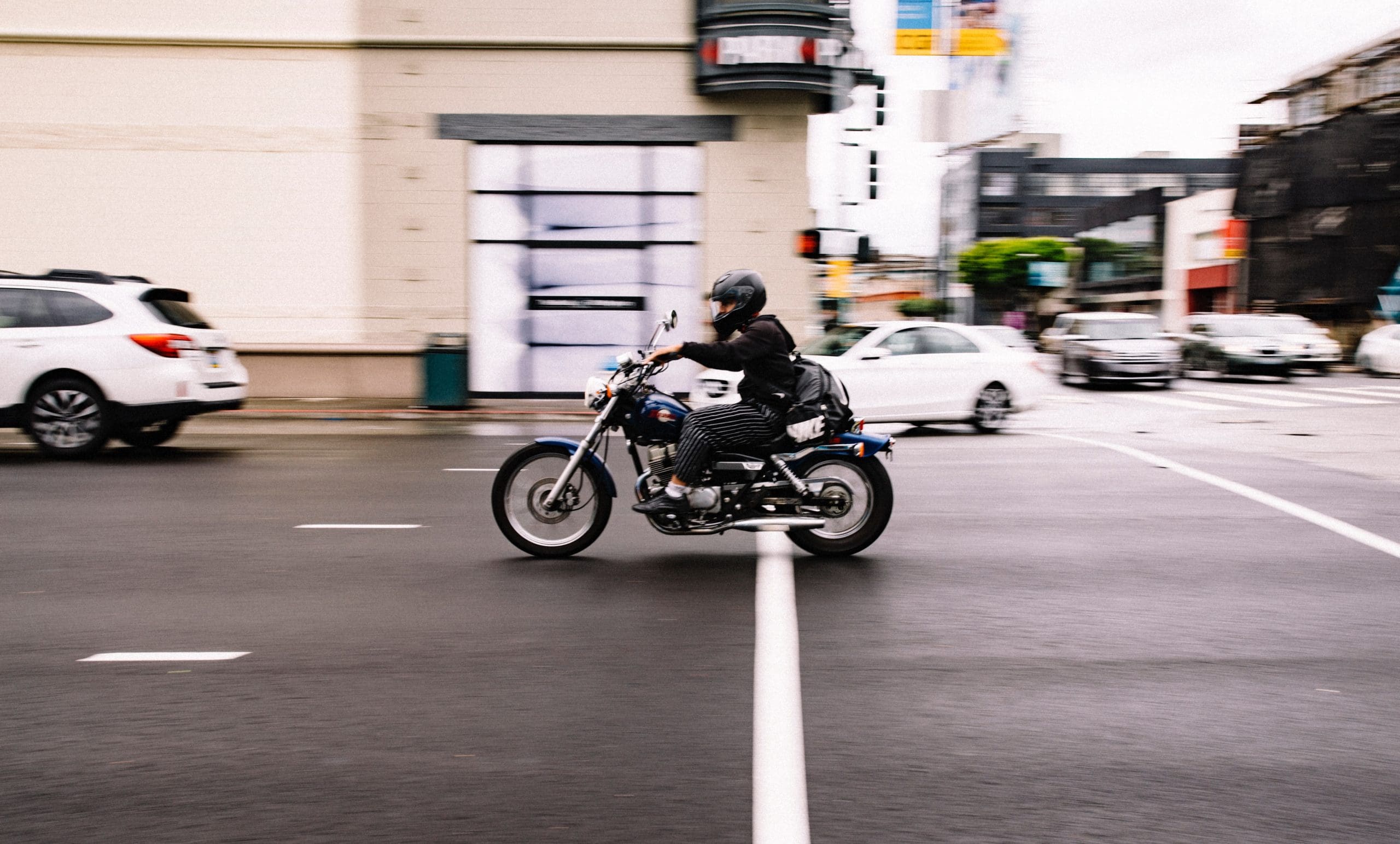
Using California’s recent law change as an example, many motorists have suggested that the act of filtering is hard to police. As the law suggests that filtering is allowed if conducted in a “safe and prudent manner,” it is awfully subjective. What one rider may consider safe and prudent, a fellow motorist may disagree with. Different interpretations of the law could lead to conflicts and put road users in danger.
Counterpoint: This argument is a valid one, and without clear rules and boundaries it’s true that some motorcyclists may take unnecessary risks or stretch the limits of the law. Similarly, car drivers may also flex their rights, making filtering unnecessarily difficult to riders, and as the law is down to interpretation, it will be hard to police. Clear definitions must be drawn up to ensure that all road users can exercise their rights safely.
It’s hard to determine who’s at fault if an accident happens
Similar to the point mentioned above, in the unlikely event that an accident occurs while filtering, it’s difficult for the authorities to accurately determine who is at fault without video evidence and reliable witnesses. And that’s what many road users, motorcyclists, and motorists alike, are most afraid of. In the event of an accident, who is liable? Who is at fault? And who owes damages to who?
More than one accident has arisen from lane filtering, and let’s not ignore that without societal buy-in, pressure and emotions from other drivers can be high. According to the lawyers at Abrahamson Uiterwyk – based in Tampa, FL – the waters get quite muddy in lane filtering accidents, and that’s especially true when an injury claim comes from it.
Who is liable if you…
Damage another car while filtering?
In a region where filtering is legal, a motorcyclist that accidentally hits and damages a stationary car would be liable to pay damages. However, if the car is purposefully obstructing the path of the motorcycle, it becomes a different story.
In regions where lane splitting is illegal, most law enforcement officers would have to place the fault squarely on the offending motorcyclist, citing them with a charge of reckless or dangerous driving.
However, this isn’t always the case. For example, Florida law follows a comparative fault model, which can place the blame and liability on a motorist under certain circumstances. A lane filtering rider may be practicing reckless riding, but if the accident was also caused due to a driver operating a vehicle while under the influence, a court may rule in favor of the motorcyclist.
Get into an accident while filtering?
As you might have guessed from the above-mentioned scenario, working out who is liable in an accident situation isn’t black and white. Many factors may be taken into consideration when authorities are working out who is to blame.
In regions where lane filtering is legal, if the accident was caused due to the contribution of another vehicle (such as car switching lanes without looking, or pulling into the path of a filtering rider, or operating a mobile phone), then the other motorist will be liable. However, the courts will look for evidence that the motorcyclist was riding safely and within the boundaries of the law. Zooming through traffic carelessly at speed will put the fault squarely on the motorcyclist.
To help keep the law on your side, it’s always best to follow the law and practice safe riding. Courts and insurance adjusters are more likely to look favorably on motorcyclists who were witnessed filtering respectfully and riding carefully, who have experience and clean driving records, and those who have taken part in motorcycle safety courses.
Assigning liability in normal situations is already a difficult task, and with filtering thrown into the mix, it will make it harder. By riding within the law and being respectful of other road users, filtering may not be such a divisive topic for motorcyclists and other road users in the future.

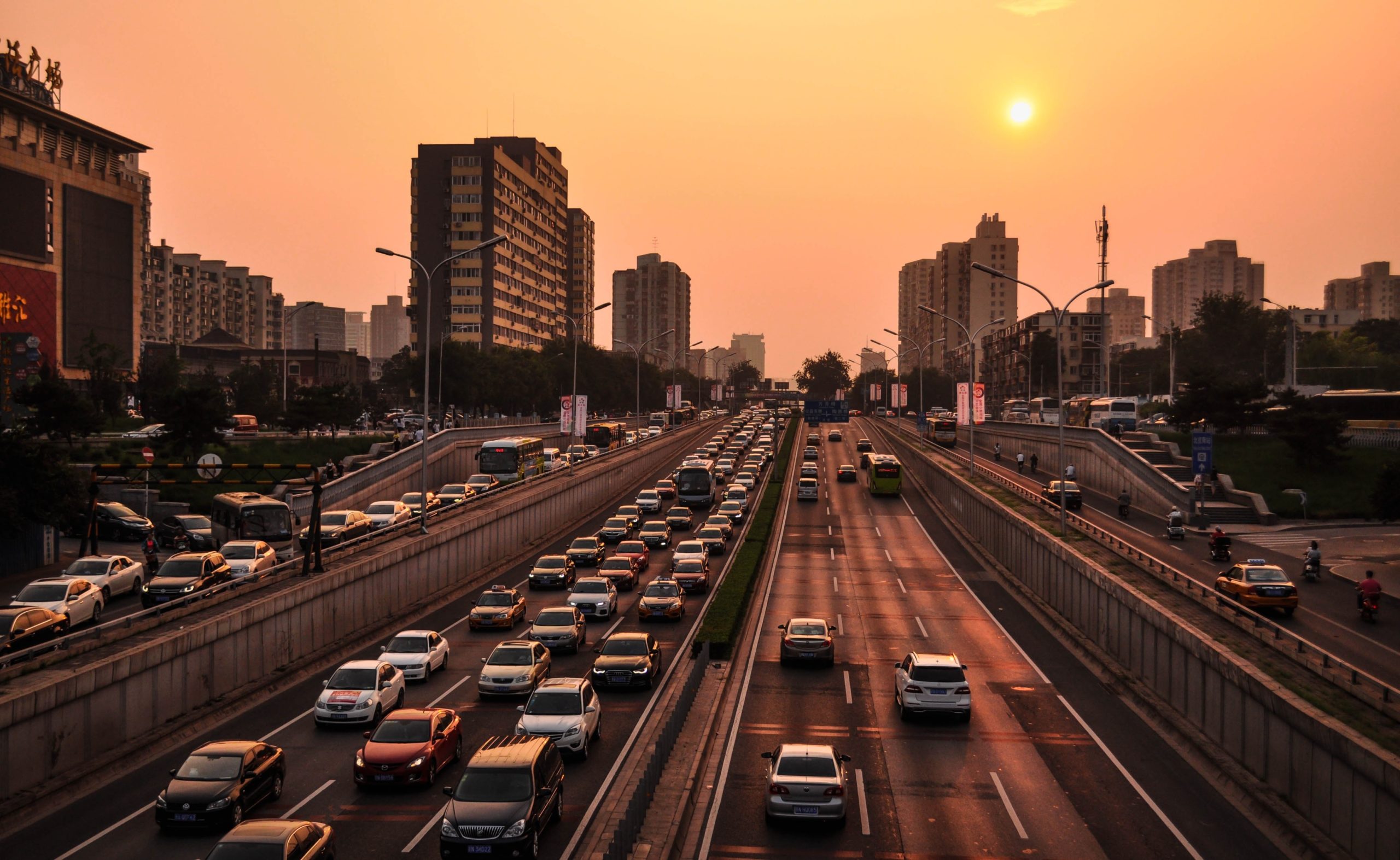

In Texas it is not illegal, nor is it legal. The traffic laws simply do not address the issue.
Wow, are you sure about that? Moved from Cali. last year and really miss splitting lanes. How can I find out for sure about this?
Bike do not hold up cars at all, so lane splitting should be allowed.
Motorists who are spiteful will close the gap…probably out of jealousy.
In South Africa there are no laws making it illegal.
I ride and do not want to lane split because I don’t trust car drivers to be aware of me. When I drive a car my lane is my lane from center line to the shoulder. If I choose to go from any particular part of my lane that’s my right I am not required to make sure some fool isn’t beside me in my lane. My lane is my lane stay out you are trespassing and when I’m in my car or on my bike I will stay in my lane and if I come in your lane and you hit me it’s my bad. Going around on road shoulder would be different since anyone changing out of lane to another lane or shoulder. has to be sure it’s clear Say you lane split to a stop light , light turns green Now What who has the right of way in this lane sharing Fiasco
Ridden the white line in CA for 25 years and still here. Safe if done correctly and the only thing that kept me sane in this screwed up state………
I’ve been very very regularly lane filtering/lane splitting in heavy traffic for decades. I was also a motorcycle courier for years riding in heavy traffic 9 hours a day, five days
a week.
Even though I’ve had a million prangs, I’ve never
had a collision while filtering/lane splitting (touch wood), apart from negative clearance with car rear vision mirrors
on 3 occasions. On those occasions I’ve been appalled
at myself and my error, and every time engaged the driver
in conversation, apologized profusely and offered to compensate the driver for my indiscretion.
I’ve found the biggest problem with filtering/lane splitting
is; “The Dog In The Manger” parable penned by Aesop ie. some drivers intentionally block… some even trying their damnedest to knock you off.
You ride enough kilometres and you will discover that
homicidal maniacs DO exist.
So dear motorcyclist, knowing you are vulnerable helps.
The fable does not appear in any of the traditional collections of Aesop’s Fables and is not attributed to him until Steinhöwel’s Esopus (c. 1476). There it is titled “Of the envious dog” (de cane invido) and illustrates a moral proposition: “People frequently begrudge something to others that they themselves cannot enjoy. Even though it does them no good, they won’t let others have it.”
Most motorcycles are air cooled, so if traffic is stopped, lane splitting will allow them to keep the heat down. However, Americans are used to being “in line” so anyone not traveling in a marked lane is considered to be cutting in line and that is what causes people to become angry and cut them off. I’ve been both in cars & on motorcycles and see positives and negatives to both sides. I’ve also been in my car and startled by a motorcycle driving by closely as I sat in traffic. While i understood the reason, it still made me jump not expecting someone to be there.
Unfortunately, I think making it legal anywhere in the US will be dangerous for the simple fact that many vehicle drivers will still think it’s illegal, dangerous and rude.